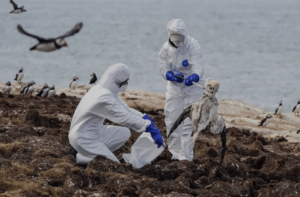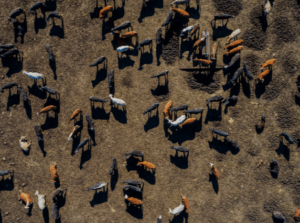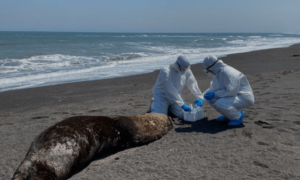Feathered Foes: WHO Alerts Public to Rising Human Bird Flu Threat
The World Health Organisation (WHO) raised alarm on Thursday over the rising cases of H5N1 bird flu virus (also known as “Avian influenza A virus”) in humans. WHO’s chief scientist, Jeremy Farrar, said during a press conference in Geneva that “the transmission of the H5N1 virus from birds to humans is an enormous concern.”.
The researcher also reported that the current avian flu outbreak started in 2020 and has since resulted in the deaths of millions of poultry, chickens, wild birds, and land and marine mammals; thus, scientists have termed the outbreak “a global zoonotic animal pandemic.”

The H5N1 virus has evolved a lot over the course of the past few years, gaining the ability to infect domestic cattle and goat herds. The transmission of the virus from avian species to humans is a dangerous precursor to human-to-human transmission, as was the case with COVID-19.
Farrar also stated that even though evidence of human-to-human transmission is not there, the high mortality rate of those infected by the virus further points towards the high inter-species transmission over time.
“Since 2020, the World Health Organisation has recorded 889 cases of H5N1 virus infection in humans, spanning over 23 countries across the globe. The infection proved to be fatal in 463 cases, indicating a mortality rate of 52%,” Farrar said. He added, “It’s very important to understand how many human infections are happening… because that’s where adaptation (of the virus) will happen.”.
WHO alarms H5N1 virus gearing up for cross-species transmission
The evidence of humans being infected by the H5N1 virus by the World Health Organization has sparked alarms across the globe. America’s Centre for Disease Control identified two human cases of H5N1 virus infection in Arkansas, Texas, late in March 2024. It was reported that the individuals came into contact with the virus-infected cattle herds who were exposed to wild birds in Kansas, Texas, Mississippi, and other states, hinting at a multistate outbreak.
As of 19 April, highly pathogenic avian influenza H5N1 confirmed in dairy cows on 29 farms in the USA, up from 26 on 16 April: Texas (11), New Mexico (6), Kansas (3), Michigan (5), Idaho (1), Ohio (1), South Dakota (1), North Carolina (1). #vogelgriep pic.twitter.com/xI8otin6Lo
— Thijs Kuiken (@thijskuiken) April 19, 2024
A nationwide search is currently underway by the authorities of the World Health Organisation to determine the epicentre of the outbreak in the U.S. An official of the WHO’s National Institute of Virology said newer victim samples will provide better insight into the current transmission capability of the virus and will also pave the way for a possible vaccine.

Authorities claim “time is of the essence”; if the virus morphs into a strain with higher human-transmission capabilities, then it will have a far more devastating impact on the continuation of humanity on earth than the COVID-19 outbreak of 2020.
Avian influenza may be the next pandemic, says WHO
The COVID-19 pandemic memories are still fresh in the minds of the world, when the virus outbreak brought the entire world to a standstill, testing the mettle of humanity’s medical advancements. The cross-species transmission trend being exhibited by the avian influenza virus is making experts wonder whether avian influenza will be the next big pandemic or not.
Climate change and global warming have accelerated the evolution of micro-organisms to withstand higher temperatures. Scientists warn that this essential survival measure will also enable the virus to survive in warm-blooded mammalian species like cattle, sheep, goats, monkeys, and even humans at some point.
⚠️ BREAKING:
World Health Organization (WHO) sounds alarm over human cases of bird flu, says ‘looking for new hosts’
The World Health Organization said that A (H5N1) strain has become “a global zoonotic animal pandemic”. pic.twitter.com/ythytdxtLA
— SARS‑CoV‑2 (COVID-19) (@COVID19_disease) April 18, 2024
Although the total recorded case number points out that human-to-human transmission of avian influenza is much less than avian-to-mammalian transmission rates, recently, the virus has shown abilities to infect mammalian animals like cattle herds, sheep’s, goats, ferrets, seals, and even domestic animals like cats and dogs.

The World Health Organisation has also said that efforts are currently underway to develop vaccines and other immunosuppressants to counter H5N1’s transmission in avian species, both wild and domestic.
The organisation has also called for better collaboration between regional, national, and international health authorities to better tackle the avian flu virus.











